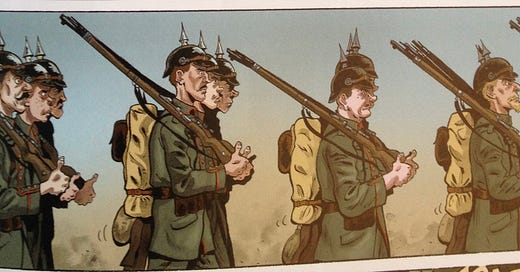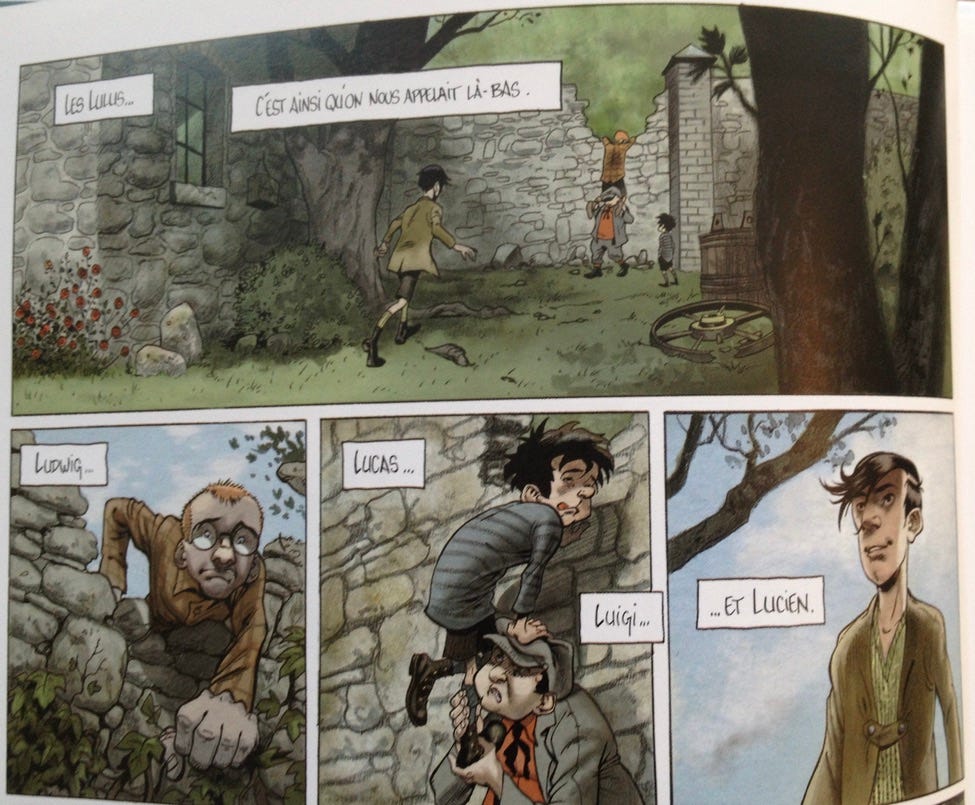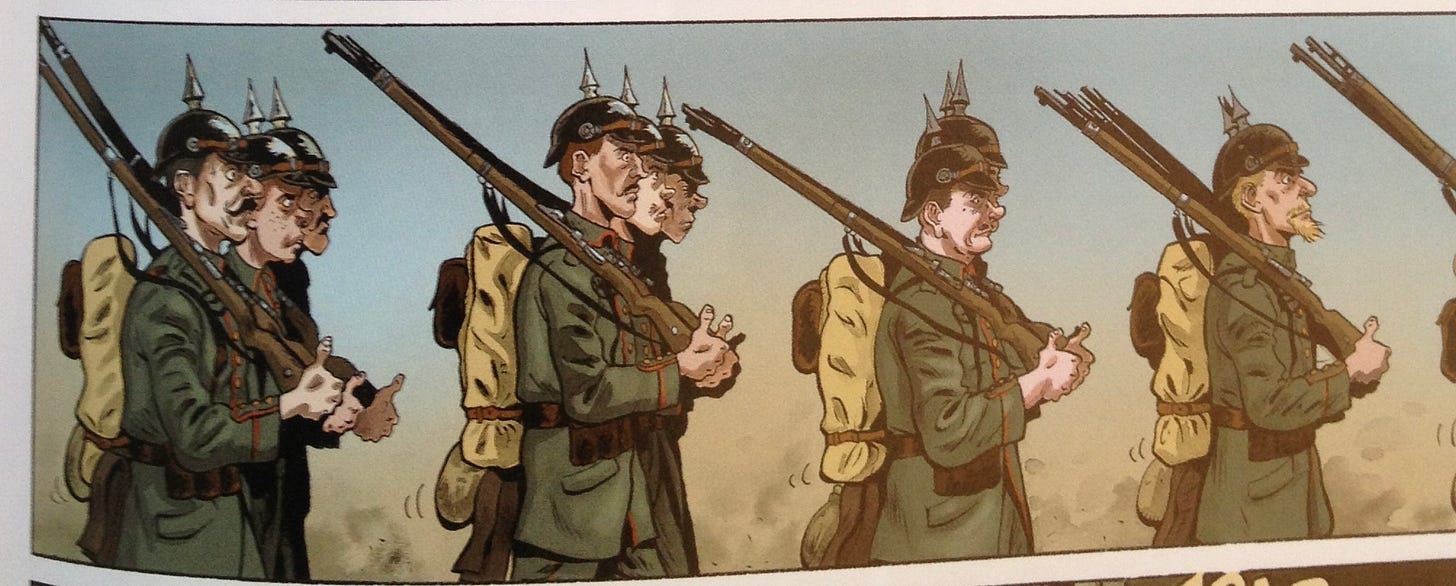Review: La Guerre des Lulus by Régis Hautière and Hardoc (Casterman, 2013)
Volume 1 of La Guerre des Lulus (The War of the Lulus) by Régis Hautière and Hardoc introduces us to four French orphans in Valencourt, Picardie. The series ha recently been made into a feature film.
Volume 1 of La Guerre des Lulus (The War of the Lulus) by Régis Hautière and Hardoc introduces us to four French orphans in Valencourt, Picardie, at the outbreak of the war. Lucas, Lucien, Luigi and Ludwig are the “Lulus” of the book’s title. They live at the orphanage attached to the local abbey, where they chafe at the restrictions and limitations imposed by the well-meaning priest and other adults.
Because La Guerre des Lulus is drawn in a style immediately recognisable as being in the Franco-Belgian tradition, it’s easy to settle into the world from a graphical perspective. At the same time, the use of this familiar style to tell a story so far removed from the antics of Astérix and Obélix or Lucky Luke jarred my sensibilities at first. Yet from the first panel of the first page, it’s clear that this series will feature some unhappy endings.
When Valencourt is evacuated at the outbreak of hostilities in August 1914, the Lulus—having sneaked off into the woods to build their tree fort—are left behind. Upon returning to the abbey, they discover that it has been abandoned. The village, although it is devoid of residents, is not entirely empty: the boys hide in the pub as German soldiers march through the thoroughfare. It is at this point that they meet Luce, a girl who was separated from her parents during the evacuation of the village.

Some children’s books published in France during the war depicted the Germans as ogres and devils—in some cases reducing them merely to giant moustaches protruding from beneath their traditional spiked helmets. I at once worried and was curious whether La Guerre des Lulus would draw on those graphical stereotypes. These worries were unfounded. Hautière and Hardoc portray German soldiers as normal people, each with their own individual physical characteristics; none of them look particularly evil or stereotypical.
Upon entering Valencourt, German soldiers occupy the abbey. The Lulus take refuge in their fort in the woods, where they eke out an existence during the late summer and autumn. However, as winter sets in, Luce gets very sick and the boys are forced to leave the drafty fort in the woods to seek help.
Although the German army has now left the abbey, none of the regular residents have returned. The boys head to a nearby farm hoping that the farmer may have remained to take care of his livestock. Unfortunately, they find no one—except for a single wounded German soldier. Luigi threatens to shoot him with his own gun; however, after a brief discussion, the boys decide to spare his life, and on that cliffhanger Volume I ends.
Recently, the series was made into a film. While I’m glad that it will bring the Lulus to a wider audience, I’m also wary: as a live-action adaptation, it foregoes the colour palette, style, and mood of Hardoc’s illustrations. This is not to say that the story alone can’t carry the movie, but that the art adds another dimension of meaning that—judging by the trailer—the movie has dispensed with. Nevertheless, if it gets a wider release, I’ll certainly check it out. In the meantime, I will continue to savour the books and encourage you to do the same.




